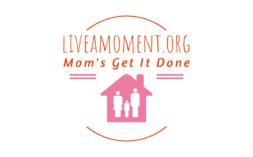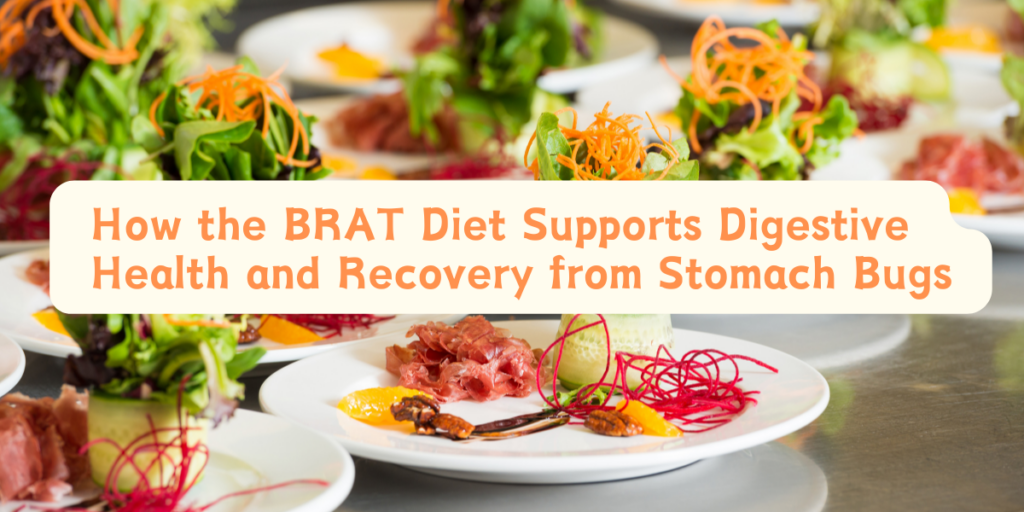When you’re battling a stomach bug, the last thing you want is a complicated meal plan. You need something simple, soothing, and gentle on your upset tummy. Enter the BRAT diet. This classic combination of Bananas, Rice, Applesauce, and Toast has been a go-to for people dealing with nausea, diarrhea, or other digestive discomfort. But how exactly does it help your body recover? Let’s dive into how the BRAT diet supports your digestive health and speeds up recovery, all while being kind to your stomach!
What Is the BRAT Diet? A Simple Introduction
The BRAT diet is a short-term eating plan designed to soothe your stomach when you’re recovering from a stomach bug or digestive issue. It’s made up of four simple foods—bananas, rice, applesauce, and toast—each of which is easy to digest and doesn’t irritate your digestive system. If you’re tracking your food with a Calorie Counter, you’ll find that these foods are low in calories, making it easy to keep track of your intake while your stomach gets back on track. While not a long-term solution, the BRAT diet can be a helpful way to regain your strength and ease your symptoms.
Understanding the Key Ingredients in BRAT Diet Foods
The BRAT diet’s simplicity is its strength. It focuses on foods that are gentle, bland, and easy to digest. Here’s a breakdown of why each ingredient works so well for digestive recovery:
Bananas: A Potassium Powerhouse
Bananas are not only easy to digest but also packed with potassium, an essential electrolyte that can be lost during bouts of vomiting or diarrhea. When your body is dehydrated, potassium helps restore balance and keeps your heart and muscles functioning properly. Bananas also contain pectin, a type of fiber that helps absorb excess liquid in the intestines, which can alleviate diarrhea.
Rice: A Gentle, Low-Fiber Carb
Plain white rice is easy on the digestive system because it’s low in fiber. This means it won’t irritate your stomach or intestines. As a starchy carbohydrate, it provides your body with energy without putting a strain on your system. Rice is especially helpful when you’re recovering from a stomach bug because it doesn’t trigger bloating or cramping like other high-fiber foods might.
Applesauce: Soft, Sweet, and Soothing
Applesauce is an ideal option when you’re looking for something light and easy to digest. Unlike raw apples, which can be harsh on your stomach, applesauce is cooked and soft. It’s gentle on the gut and also contains pectin, which can help bulk up stool and reduce diarrhea. Plus, it provides a bit of natural sweetness, which can be a comforting change from bland foods.
Toast: Simple Carbs for Sustenance
Toast, made from white bread, is a good source of simple carbohydrates. Like rice, it’s bland and easy to digest. Toast provides a bit of crunch and texture, which can be satisfying when you’re recovering from illness. Just be sure to avoid butter, jam, or anything high in fat, as these can irritate the stomach when it’s sensitive.
Water and Clear Liquids: Vital for Hydration
Though not technically part of the “BRAT” foods, hydration is key during digestive recovery. Clear liquids like water, broth, and herbal teas help prevent dehydration, which is a common issue when you’re dealing with vomiting or diarrhea. Staying hydrated ensures that your body has the fluids it needs to heal and function properly.
How the BRAT Diet Helps Calm Stomach Bugs and Improve Digestion
The BRAT diet works by offering foods that are soft, bland, and low in fiber, which are less likely to irritate an inflamed digestive system. When you’re dealing with a stomach bug or digestive upset, your gut needs a break from the usual heavy, spicy, or greasy foods that can make things worse.

Here’s how the BRAT diet helps:
- Soothing and Gentle on the Stomach: Each BRAT food is easy to digest, which means your stomach doesn’t have to work overtime to break it down. This gives your digestive system time to rest and heal.
- Replenishing Nutrients: Bananas help restore potassium, while rice and toast offer easily digestible carbohydrates for energy. Applesauce provides a bit of natural sugar without being harsh on the stomach.
- Managing Diarrhea: The low fiber content in rice and toast, combined with the pectin in bananas and applesauce, helps firm up stool and reduce the frequency of diarrhea.
- Hydration: Since the BRAT diet is often paired with clear liquids, it helps ensure you stay hydrated, which is critical for your recovery.
Who Should Try the BRAT Diet?
The BRAT diet can be a great short-term solution for people dealing with stomach issues, but it’s not for everyone. Here’s who could benefit most:
- People Recovering from Stomach Bugs: If you’re dealing with nausea, vomiting, or diarrhea, the BRAT diet provides gentle, easily digestible foods to help you recover.
- Children with Digestive Issues: The BRAT diet is often recommended for young children who are sick with stomach bugs. It’s simple and easy for little tummies to handle.
- Anyone with Gastrointestinal Distress: If you’ve recently experienced food poisoning, IBS flare-ups, or other stomach issues, the BRAT diet can give your digestive system a much-needed break.
Using a Calorie Tracker can help you keep track of your intake while following the BRAT diet. Since the foods are low in calories, it’s important to stay mindful of your overall nutrition as you recover.
BRAT Diet vs. Clear Liquid Diet: Which Supports Digestion Better?
Both the BRAT diet and a Clear Liquid Diet are used to manage digestive distress, but they serve different purposes and stages of recovery.
- Clear Liquid Diet: A Clear Liquid Diet consists of clear fluids, like water, broth, and clear juices, and is typically recommended for the first 24-48 hours after vomiting or diarrhea begins. It’s meant to keep you hydrated and prevent dehydration, but it doesn’t offer much in the way of calories or nutrients.
- BRAT Diet: The BRAT diet offers more structure, providing simple solid foods like bananas, rice, applesauce, and toast. Once you can handle liquids and need to move on to something more substantial, the BRAT diet helps reintroduce calories and nutrients without overwhelming your system.
In Summary:
- Clear Liquid Diet is great for the first stage of recovery, especially when you can’t tolerate solids.
- BRAT Diet is better when you’re ready for solid foods, as it provides easy-to-digest carbs and gentle nutrition.
A Step-by-Step Guide to Following the BRAT Diet
Ready to try the BRAT diet? Here’s how to make it work for you:
- Start Slow: After vomiting or suffering from severe diarrhea, you should begin by taking only clear liquids like water or broth for the first 24 hours. After that, once your stomach settles, introduce small portions of BRAT foods.
- Portion Control: Do not overeat, small frequent meals should be consumed; by this, you will not overwhelm your stomach. Take care, eating too much at once usually worsens nausea or bloating.
- Track Your Intake: A Calorie Tracker keeps you informed about what you are consuming; it can especially help with BRAT foods, which are not very calorically rich.
- Gradual Reintroduction: After becoming better, slowly start to take in some more bland, easy-to-digest foods such as boiled potatoes, crackers, or cooked vegetables.
- Hydrate Constantly: Drink plenty of clear liquids, including water and electrolyte drinks, to stay hydrated.
Does Science Support the BRAT Diet?
Doctors often recommend BRAT diets because they are rather simple and mild for the digestive tract, but what does science say about it?

The BRAT diet may be based on anecdotal evidence and may have been recommended for many years, but that does not mean it is a complete solution. According to some experts, this diet does not include adequate protein and many other essential nutrients, which can create problems in the longer term. However, it can really help in the very short term, especially at the beginning of the recovery phase after a stomach bug or gastrointestinal issue. This would calm inflammation and, in effect, help avert further digestive distress.
Using Calorie AI tools can also help you balance your intake during this time to ensure you’re getting the nutrients you need as you recover.
Additional Benefits of the BRAT Diet Beyond Digestive Recovery
While the BRAT diet is typically associated with stomach bugs, it has other potential benefits:
- Supports Post-Surgery Recovery: After abdominal surgery, the BRAT diet can help ease the transition back to solid foods by providing gentle, easy-to-digest options.
- Calms Sensitive Stomachs: For people with sensitive digestive systems or conditions like IBS, the BRAT diet can provide relief during flare-ups.
- Ideal for Children with Tummy Troubles: Because it’s simple and easy to tolerate, the BRAT diet is often recommended for young kids who are recovering from illnesses like the stomach flu.
Conclusion
The BRAT diet is a helpful and pretty effective remedy for digestion recovery whenever a person gets strikes from a stomach bug or digestive disturbance. Using these boring, easy-digest foods, such as bananas, rice, applesauce, and toast, soothes the stomach, offers lost nutrients, and hydrates. It is a short-term get-around. Reenter a well-balanced diet as you feel better. So, next time your stomach decides to throw a fit, just keep it simple with the BRAT diet, and you’ll be back on your feet in no time!


